Choosing between Naples and Rome isn’t easy. These two Italian cities offer very different experiences for travelers. Naples pulses with raw energy and authentic charm.
It’s a city of narrow streets, loud voices, and amazing pizza. Rome dazzles with its ancient ruins and grand monuments. It’s a living museum that draws millions of visitors each year.
Naples gives you a taste of southern Italian life, while Rome showcases the country’s most famous sights. In Naples, you’ll find fewer tourists and lower prices.
The city sits on a beautiful bay with views of Mount Vesuvius. It has world-famous attractions like the Colosseum and Vatican City. Rome is bigger, and more spread out than Naples.
Both cities have great food, but the style is different. Naples is the birthplace of pizza and is known for seafood, while Rome is famous for pasta dishes like carbonara.
Each place has its vibe—Naples is gritty and lively, while Rome is more polished and touristy. The choice comes down to what kind of Italian adventure you want.
Key Takeaways
- Naples offers authentic southern Italian culture and amazing food at lower prices.
- Rome has iconic ancient sites and attractions that draw millions of visitors yearly.
- Both cities provide distinct experiences of Italian life, history, and cuisine.
Historical Context and Significance
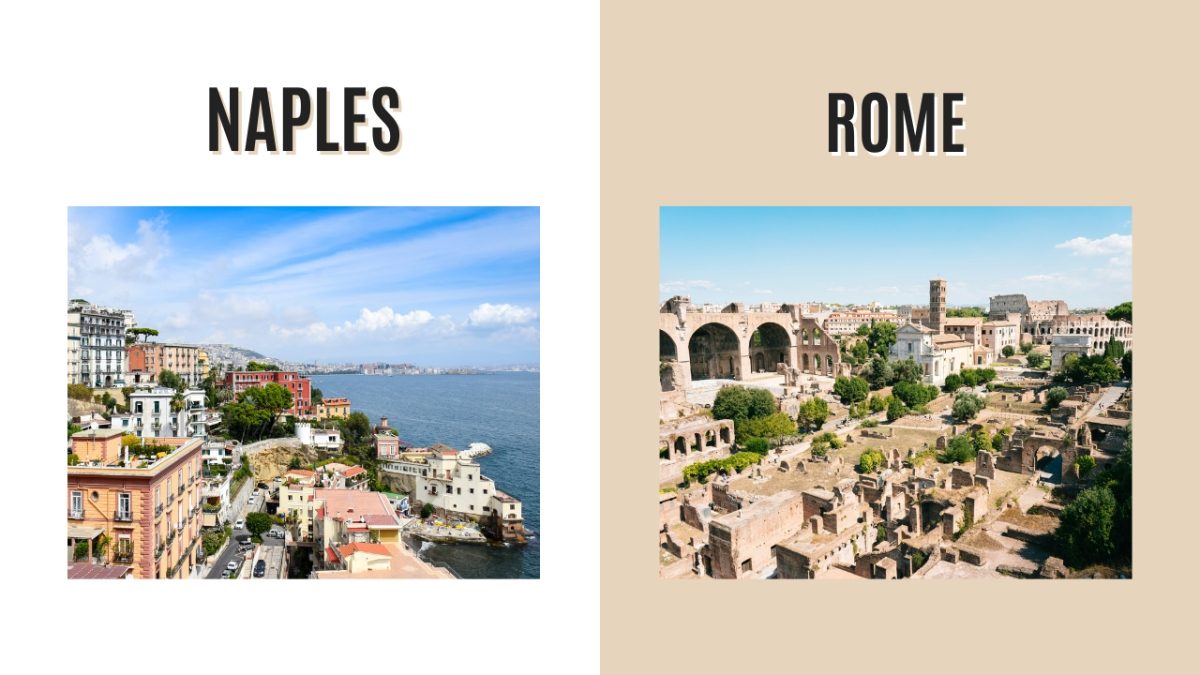
Rome and Naples boast rich histories spanning thousands of years. These two Italian cities have played crucial roles in shaping Western civilization, from ancient empires to modern times.
Founding Myths and Ancient History
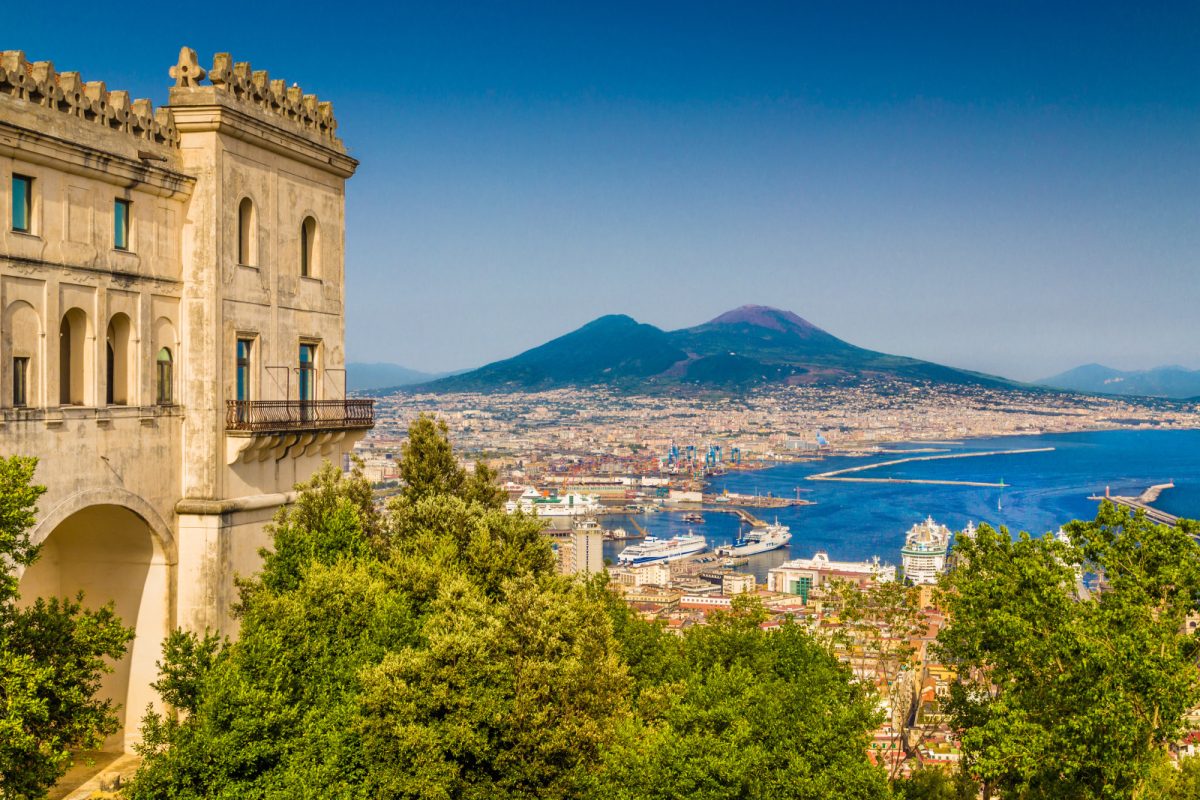
Rome’s birth story is legendary. Twin brothers Romulus and Remus, raised by a she-wolf, founded the city in 753 BCE.
This tale captures the imagination, even if it’s more myth than fact. Naples has its own fascinating origin story.
Greek settlers founded the city as Parthenope in the 8th century BCE. Later, they established Neapolis (New City) nearby. This dual heritage gives Naples a unique character.
The Roman Republic grew into a mighty empire with Rome at its heart. The city became known as the “Eternal City” for its enduring power and beauty.
Naples, meanwhile, thrived as a Greek colony. Its strategic location on the Gulf of Naples made it a valuable prize.
From the Roman Empire to the Present
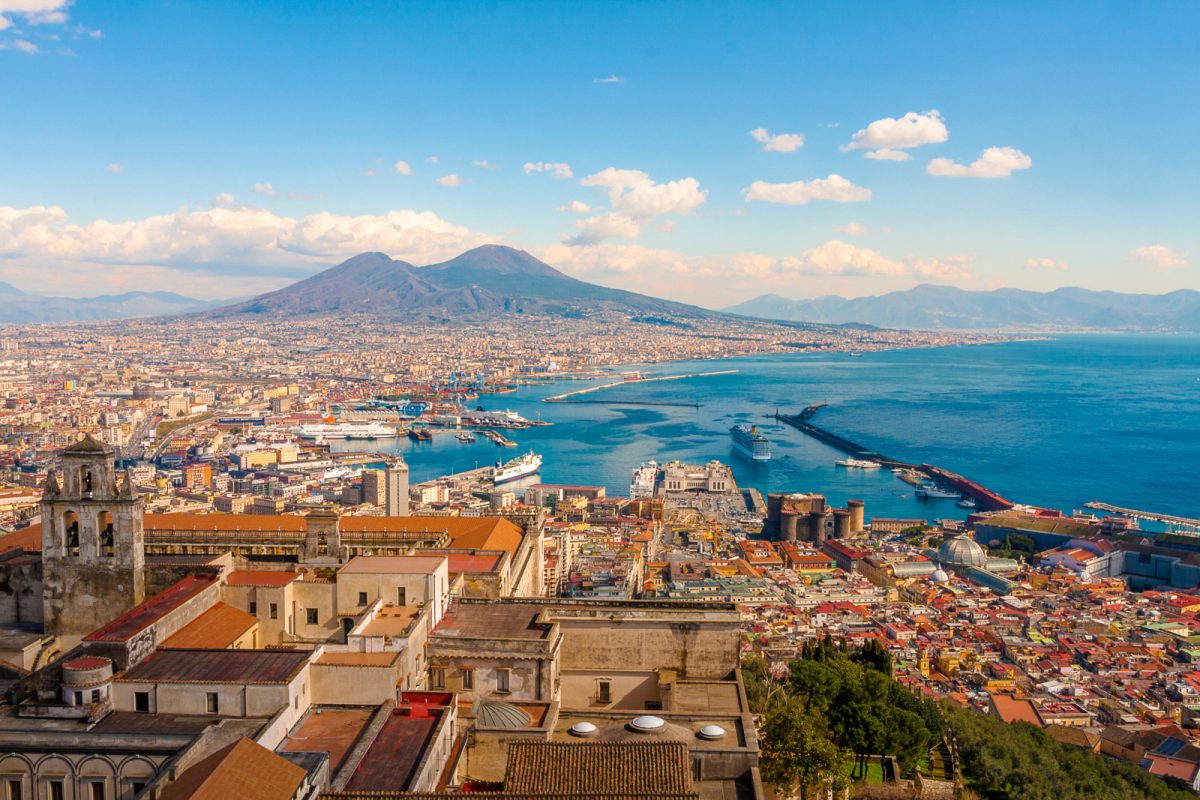
As Rome’s power expanded, it absorbed Naples into its empire. Both cities flourished under Roman rule. Rome became the capital of a vast territory.
Naples served as a cultural hub and seaside retreat for wealthy Romans. The eruption of Mount Vesuvius in 79 CE devastated nearby Pompeii and Herculaneum. This tragic event preserved these ancient towns for modern archaeologists to study.
After Rome’s fall, the two cities took different paths. Rome remained important as the center of the Catholic Church, while Naples became the capital of its own kingdom.
Both faced invasions, plagues, and political upheavals over the centuries. Today, Rome and Naples are major Italian cities. They attract millions of visitors eager to explore their layered histories and vibrant cultures.
Geography and Cityscape

Rome and Naples boast distinct landscapes shaped by history and nature. The terrain of each city influences its layout and character in unique ways.
The Seven Hills of Rome
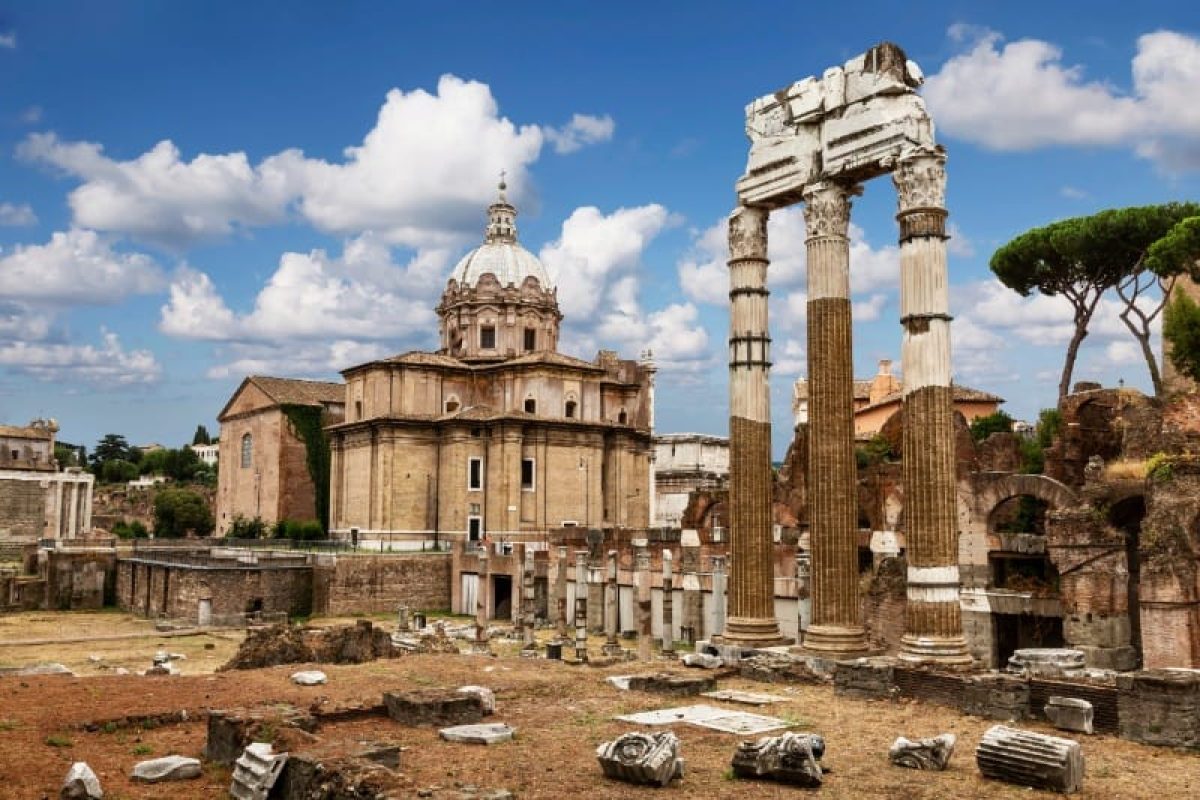
Rome’s famous seven hills give the city its iconic profile. The Palatine, Aventine, Capitoline, Caelian, Esquiline, Quirinal, and Viminal hills rise from the Tiber River, creating a dramatic cityscape.
Ancient Romans built temples and palaces atop these hills. Today, parks, monuments, and scenic viewpoints dot the slopes.
The Capitoline Hill is home to museums and government buildings. From the Palatine, you can gaze down at the ruins of the Roman Forum.
Winding streets connect the hills, leading to hidden piazzas and panoramic terraces. As you explore, you’ll notice how the changing elevations shape Rome’s neighborhoods and vistas.
Naples’ Gulf and Natural Beauty
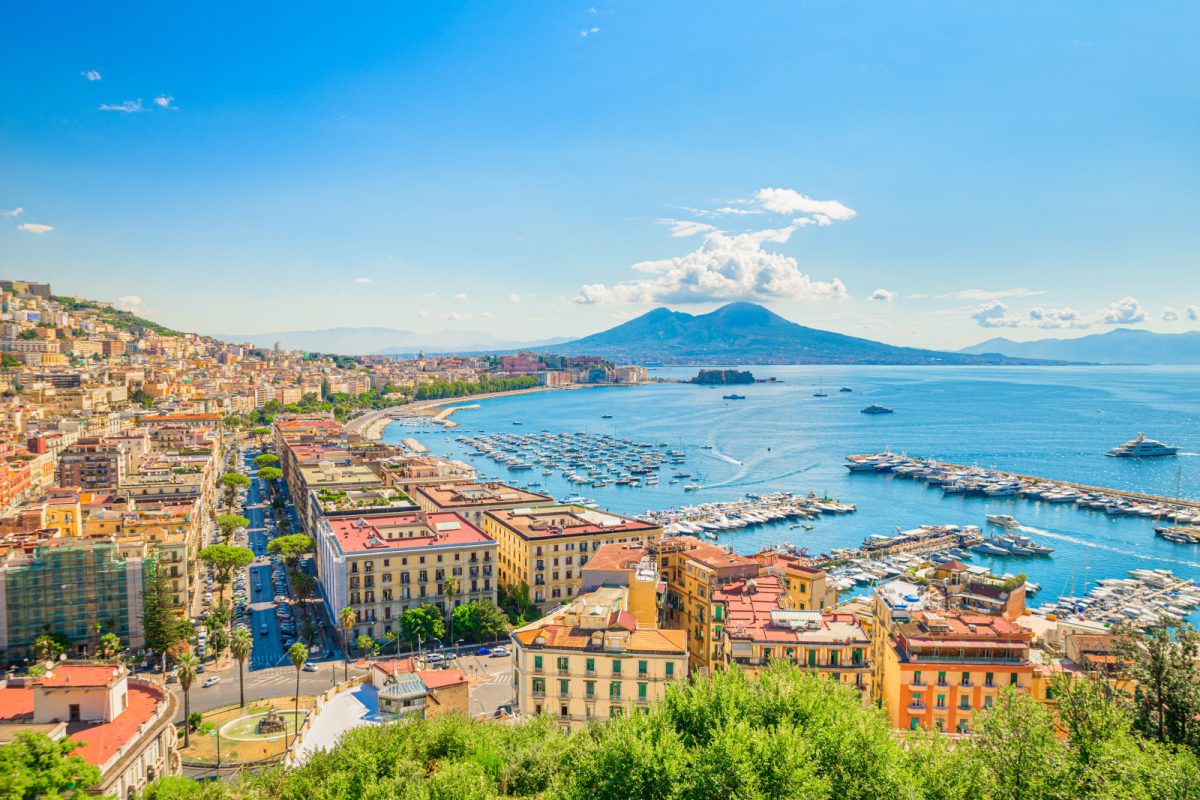
Naples spreads along a stunning curved coastline, embraced by the azure waters of its namesake gulf. The city climbs up from the shore towards lush hills, offering breathtaking views at every turn. Mount Vesuvius looms in the distance, a constant reminder of nature’s power.
Stroll along Via Caracciolo for postcard-perfect sea views. Or climb up to Vomero Hill for a sweeping panorama of the bay, islands, and city below.
Naples’ historic center is relatively flat, making it easy to explore on foot. But venture into the surrounding hills and discover charming neighborhoods with winding lanes and steep staircases.
The city’s natural setting provides endless photo ops. Sunsets over the Bay of Naples are unforgettable. And on clear days, you can spot the islands of Capri and Ischia on the horizon.
See Related: Two Weeks in Italy Itinerary: The Perfect Family Adventure
Cultural Insights
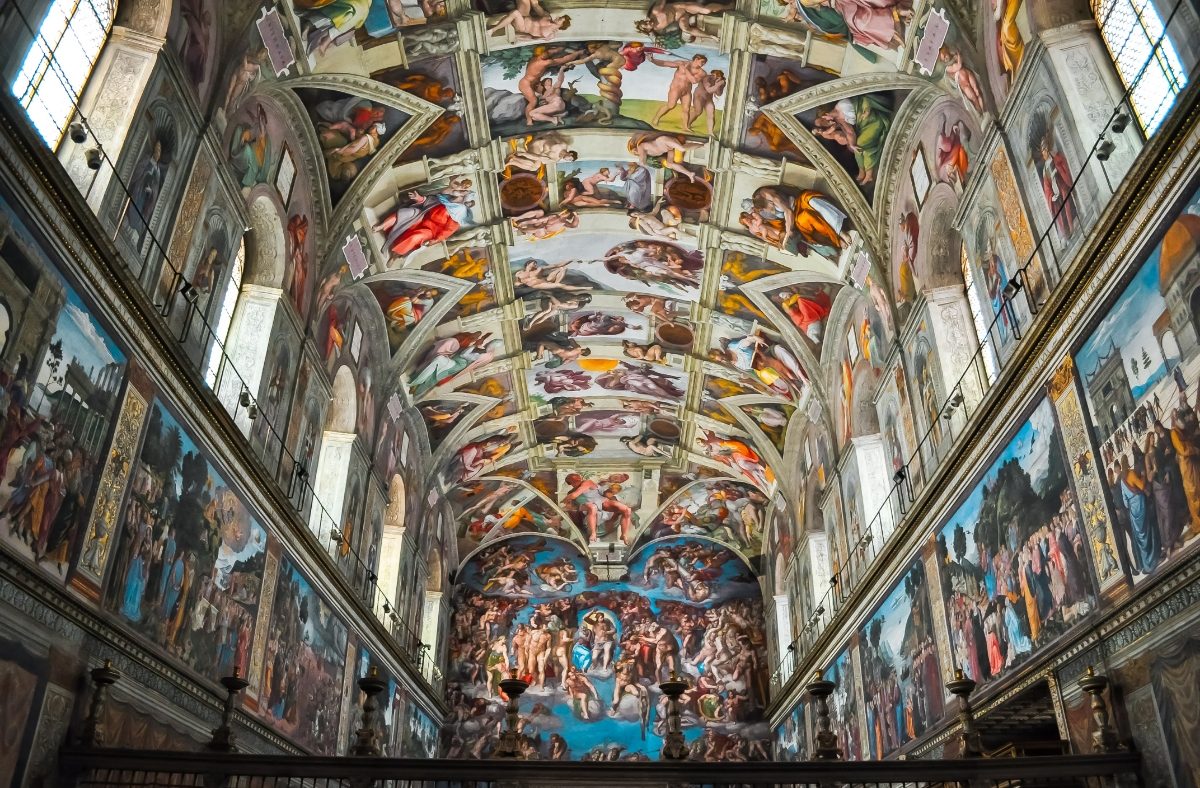
Rome and Naples offer rich cultural experiences rooted in centuries of history. Both cities boast amazing art, unique traditions, and lively festivals that showcase their distinct personalities.
Artistic Heritage and Museums

Rome’s artistic legacy is unmatched. The Vatican Museums house treasures like the Sistine Chapel, while the Borghese Gallery displays Bernini sculptures and Caravaggio paintings.
Don’t miss the MAXXI for modern art. Entry fees range from €15-25.
Naples shines with its artistic flair. The Naples National Archaeological Museum is a must-see, with artifacts from Pompeii and Herculaneum.
It costs €15. The Capodimonte Museum showcases works by Italian masters in a stunning palace setting.
Street art thrives in Naples’ Spanish Quarters. Colorful murals breathe life into narrow alleys. It’s free to explore and perfect for Instagram-worthy shots.
Signature Festivals and Events
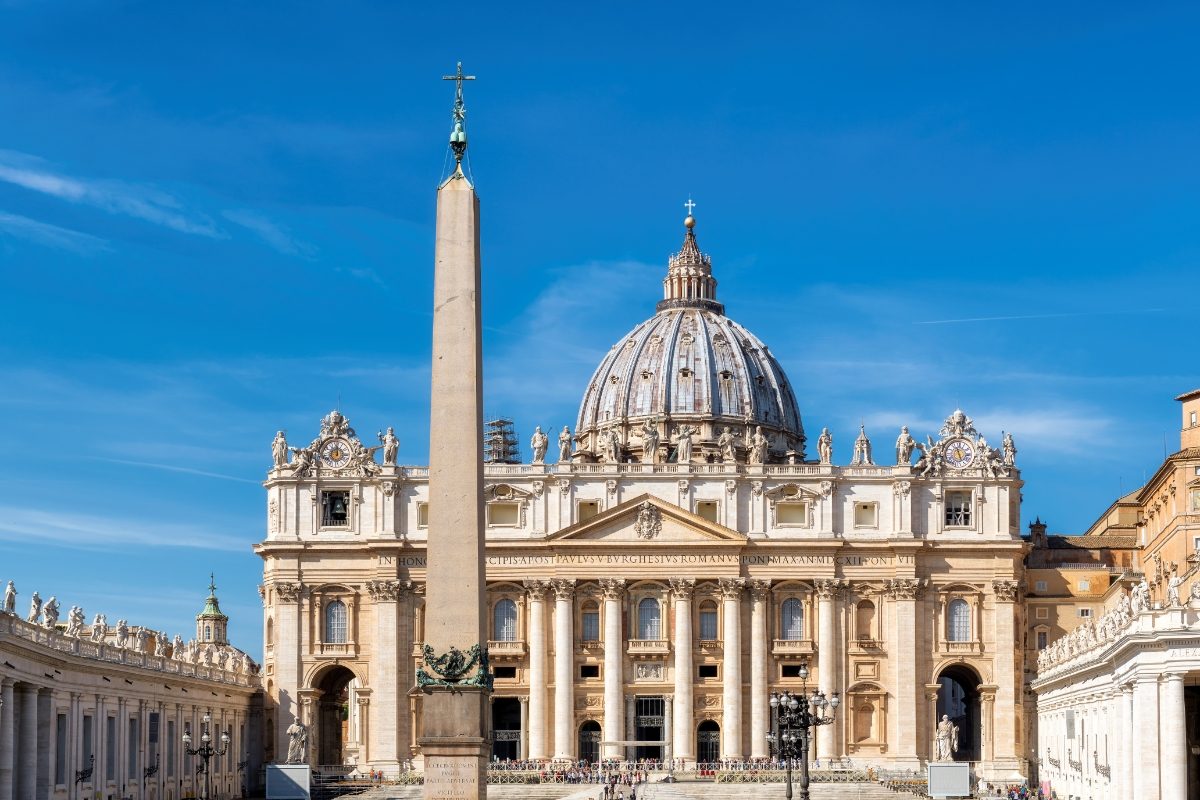
Rome comes alive during Easter Week. The Pope leads services at St. Peter’s Basilica, drawing huge crowds. If you plan to visit, then book accommodations early.
Naples’ pizza-making tradition earned UNESCO status. The city celebrates with the Napoli Pizza Village each June. Taste pies from top pizzerias for €10-15.
Rome’s summer brings outdoor cinema in historic squares. Catch a film under the stars at places like Piazza San Cosimato. Tickets cost about €7.
Naples hosts the Feast of San Gennaro in September. Watch the city erupt in joy if the saint’s blood liquefies – a centuries-old miracle.
Lifestyle and Atmosphere
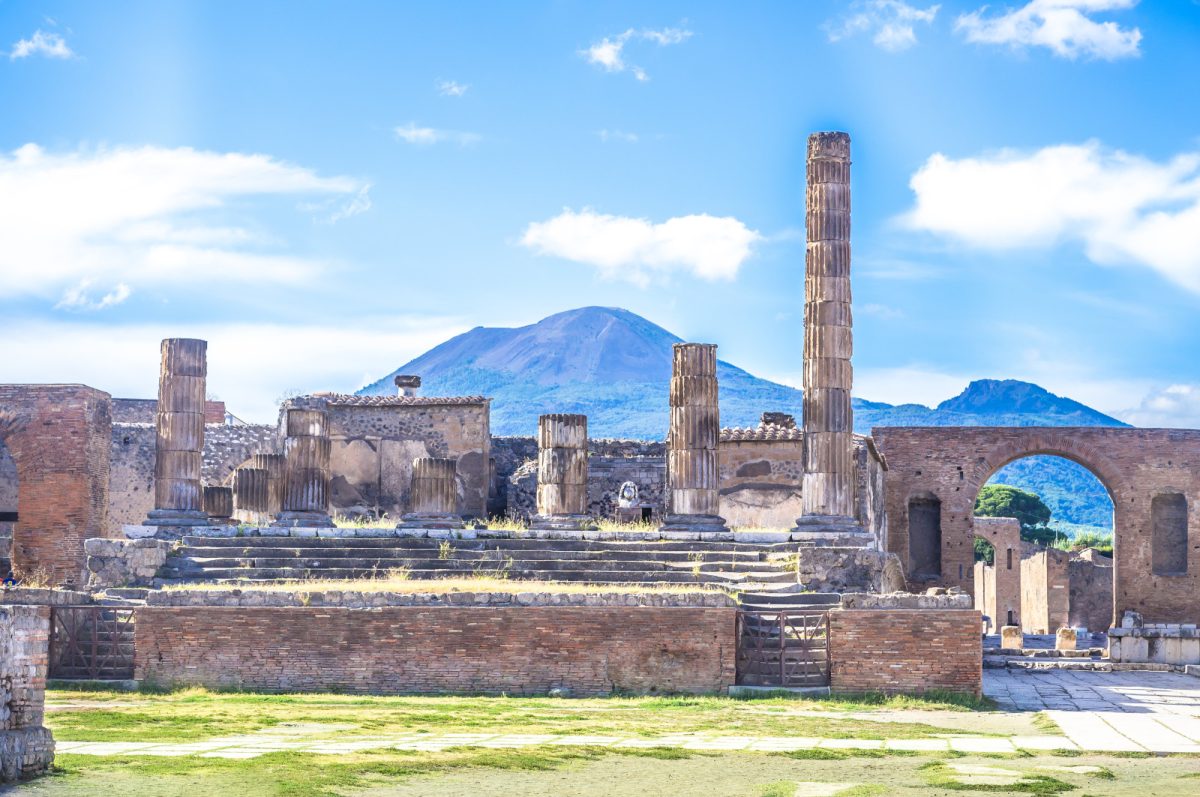
Naples and Rome offer distinct vibes that shape daily life and nighttime fun. The cities have their own rhythms, from morning coffee rituals to late-night adventures.
Daily Life and Local Habits
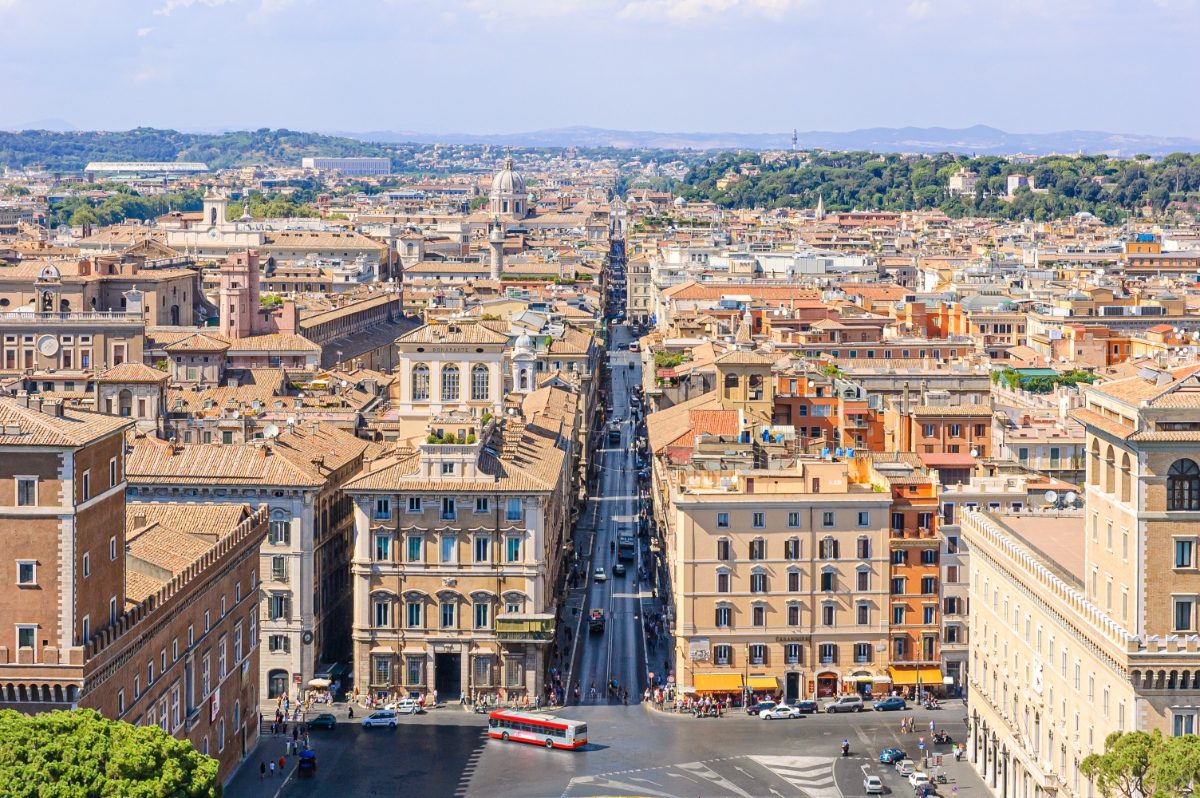
In Naples, life moves at a lively pace. Locals start their day with a quick espresso at a neighborhood bar, often grabbing a sfogliatella pastry.
The streets buzz with scooters zipping by and animated conversations. Neapolitans take their afternoon siesta seriously, with many shops closing from 1–4 p.m.
Rome’s pace feels more relaxed. Mornings begin with a cappuccino and cornetto at a local cafe. Romans linger over lunch, savoring multi-course meals.
The afternoon passeggiata (stroll) is a cherished tradition. Locals dress up to wander the Centro Storico or window shop along Via del Corso.
Both cities embrace the art of dolce far niente – the sweetness of doing nothing. You’ll see folks chatting for hours in piazzas or lingering over aperitivo drinks.
Nightlife and Entertainment
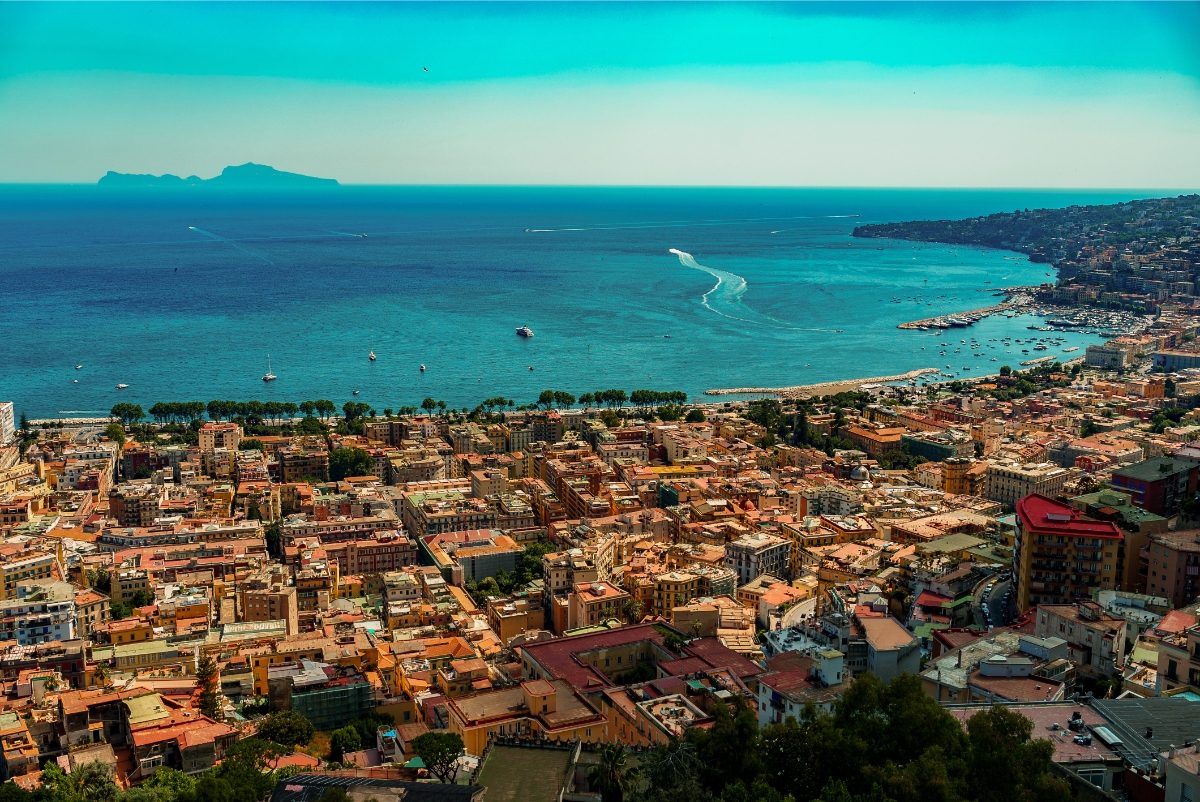
Naples comes alive after dark. The Chiaia district is the place to be, with trendy bars and clubs along the waterfront.
For a more alternative scene, head to the gritty Piazza Bellini. Late-night pizza is a must—try the famous Da Michele, open until 1 a.m.
Rome’s nightlife is more spread out. Trastevere is a hotspot, with cobblestone streets lined with wine bars and pubs.
Campo de’ Fiori draws a younger crowd, while Testaccio is home to some of the city’s best clubs. For a classier night out, sip cocktails at a rooftop bar overlooking the Colosseum.
Both cities host outdoor summer festivals with live music and events. In Rome, check out Estate Romana. Naples has the Napoli Teatro Festival Italia.
Culinary Delights
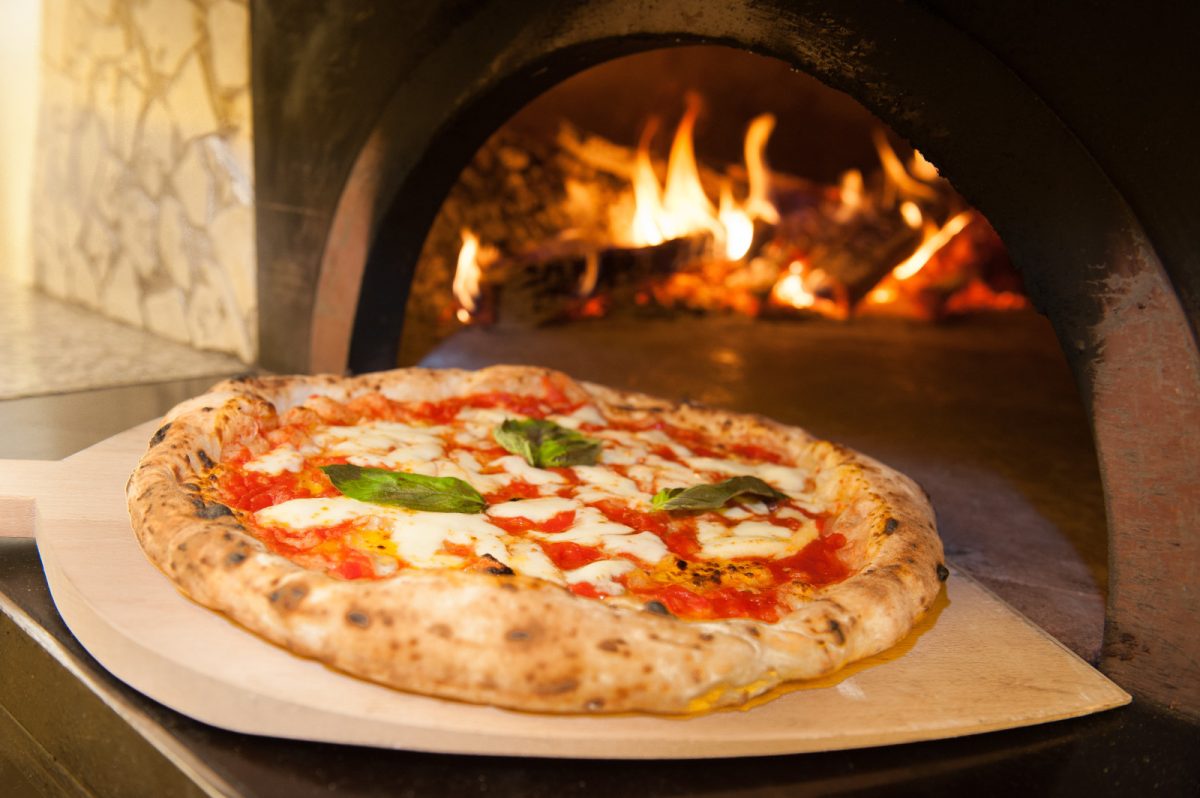
Rome and Naples offer mouthwatering food experiences showcasing the best Italian cuisine. These cities are food lovers’ paradise, from iconic pizzas to rich pasta dishes.
Traditional Dishes and Specialties

Naples is the birthplace of pizza, and Neapolitan pizza is world-famous. Locals say the secret is in the simple, high-quality ingredients.
A classic Margherita pizza costs about €7-10 ($8-12). Don’t miss trying it at L’Antica Pizzeria da Michele, where Julia Roberts ate in “Eat Pray Love.”
Rome boasts hearty pasta dishes like carbonara and cacio e pepe. These simple yet flavorful recipes highlight the city’s culinary traditions. A plate of pasta usually runs €10-15 ($12-18) at most trattorias.
Both cities offer amazing desserts. In Naples, try sfogliatella – a shell-shaped pastry filled with sweet ricotta. Rome’s tiramisu is a must-have, with layers of coffee-soaked ladyfingers and mascarpone cream.
Dining Experiences and Etiquette
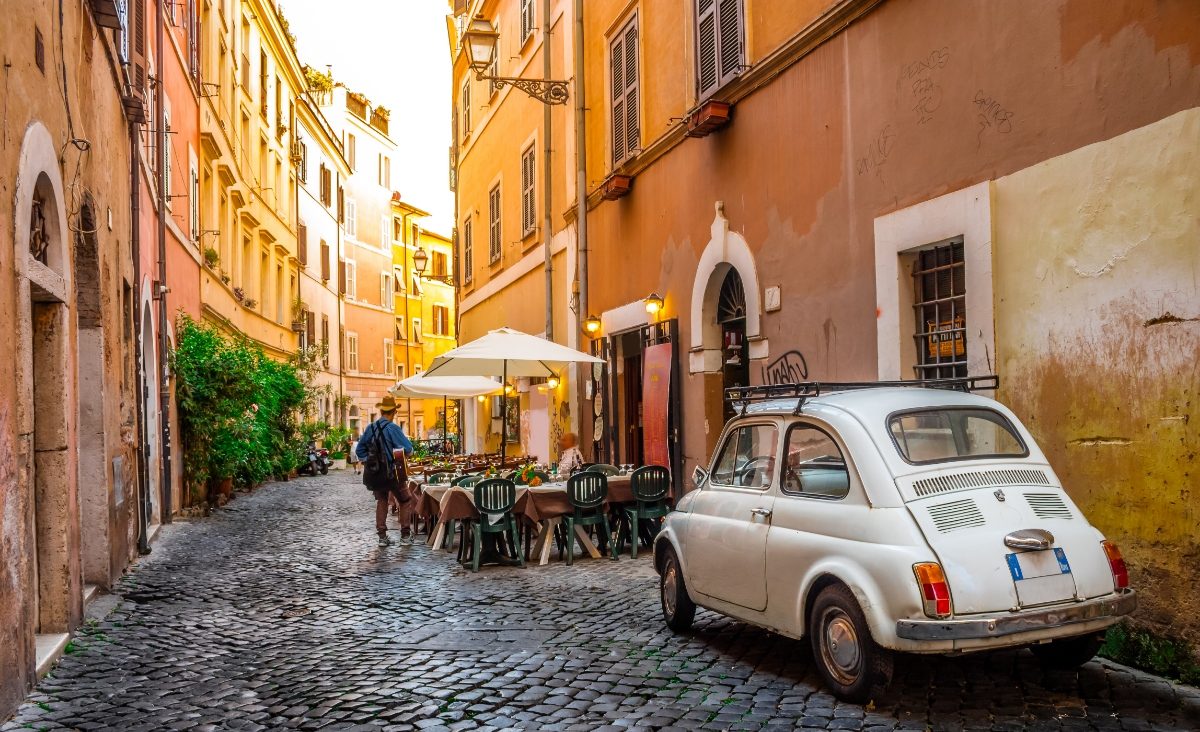
Eating out in Italy is an event, not just a meal. Dinners often start late, around 8 or 9 pm, and can last for hours. It’s common to see families with kids out enjoying long meals together.
In Naples, try a friggitoria – a small shop selling fried goodies like arancini (rice balls) and potato croquettes. These make great cheap snacks while exploring the city.
Rome’s aperitivo scene is fantastic. Many bars offer a buffet of snacks with your pre-dinner drinks. It’s a great way to sample lots of different foods.
Remember, Italians rarely ask for a doggy bag. It’s best to order only what you can eat. And don’t expect to rush through your meal – savoring the food and company is part of the experience!
See Related: Exploring Rome’s Street Food Scene: What and Where to Eat
Iconic Landmarks and Attractions
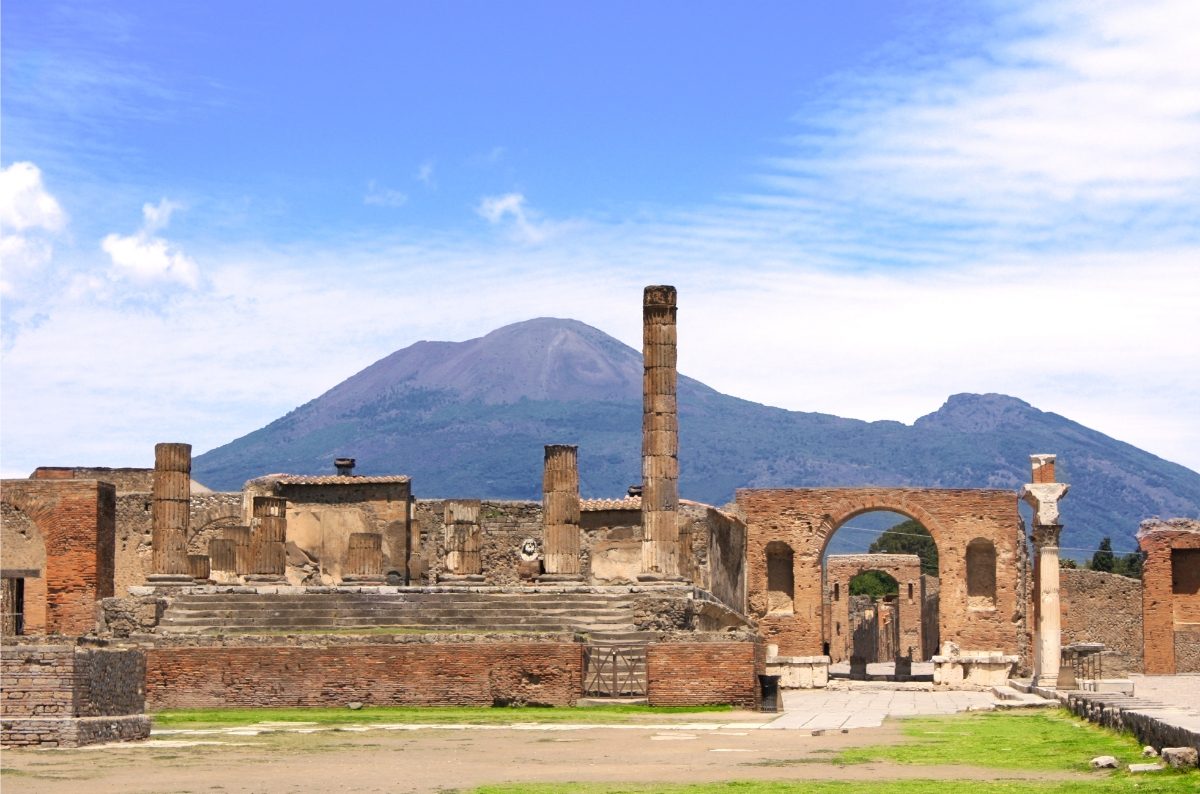
Rome and Naples boast incredible sights that showcase Italy’s rich history and culture. From ancient ruins to grand cathedrals, these cities offer visitors a chance to step back in time while enjoying modern Italian life.
Notable Historical Sites

The Colosseum stands as Rome’s most famous landmark. This massive arena hosted gladiator fights and other spectacles nearly 2,000 years ago.
Tickets cost about €16/$18. Just a short walk away, the Roman Forum gives a glimpse into daily life in ancient Rome.
Naples has its ancient wonders, too. The ruins of Pompeii lie just outside the city.
This town was frozen in time by Mount Vesuvius’s eruption in 79 AD. Entry is €16/$18.
Back in Rome, don’t miss the Pantheon with its perfect dome. It’s free to visit this architectural marvel that’s been in continuous use for almost 2,000 years.
Modern Aspects and Developments

While steeped in history, both cities have vibrant modern sides. Rome’s Spanish Steps are a popular hangout spot.
Nearby, the Trevi Fountain draws crowds who toss coins for good luck. Pro tip: visit at night when it’s lit up and less crowded.
Naples showcases its newer side with Castel Nuovo, a medieval castle that now hosts art exhibitions. The city’s famous pizza is a more recent invention – only about 150 years old! Try it at one of the many pizzerias in the historic center.
Vatican City, though technically its own country, is a must-see in Rome. St. Peter’s Basilica and the Sistine Chapel house some of the world’s greatest art.
Travel and Accommodation
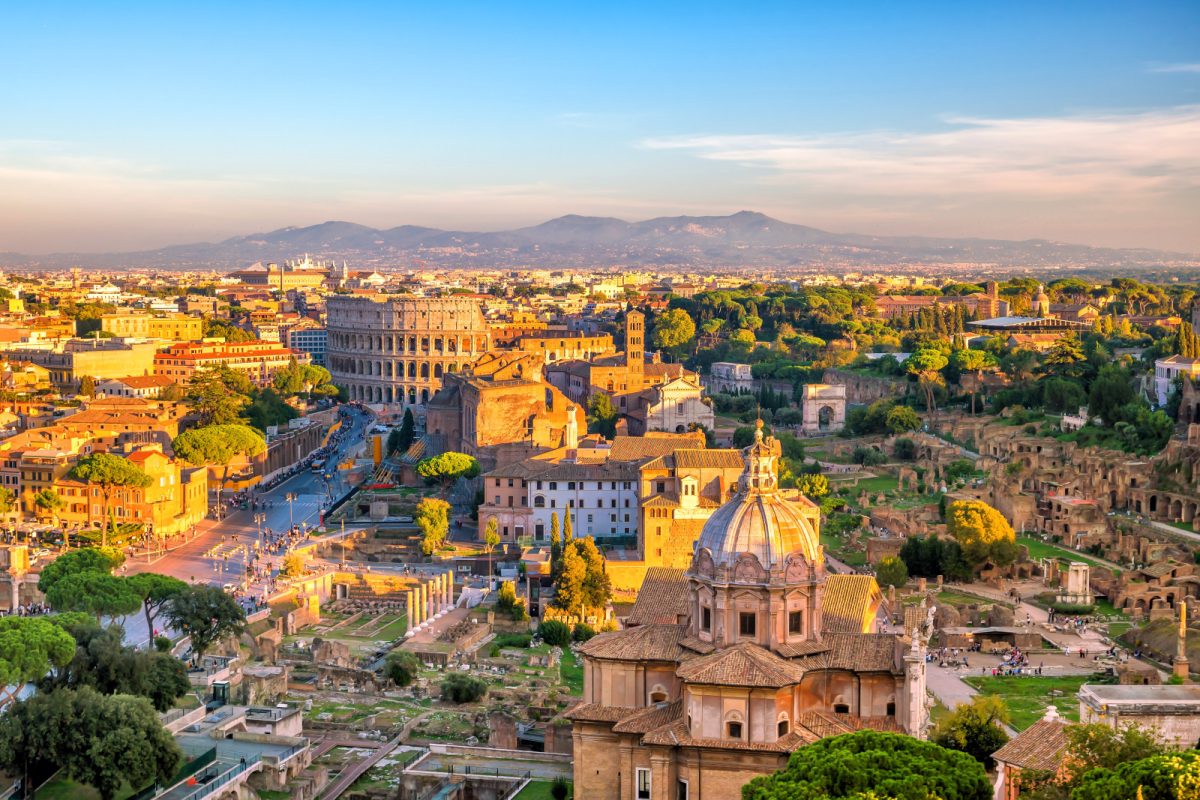
Getting around and finding a place to stay can make or break your Italian adventure. Naples and Rome offer unique experiences for travelers with their quirks and charms.
Navigating Through the Cities
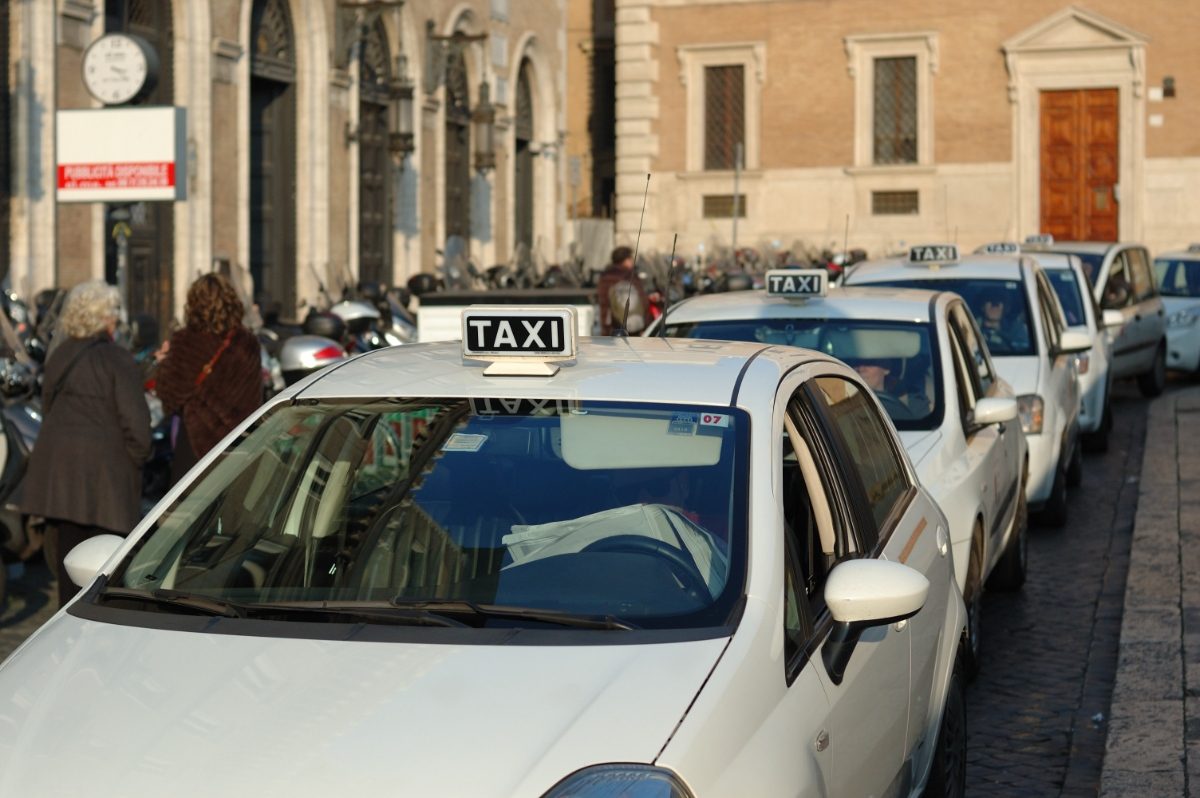
Rome’s metro system is decent but not as extensive as expected. Buses fill in the gaps, though they can be a bit confusing for newcomers.
Naples, on the other hand, has a smaller but surprisingly efficient metro network. It also has funky funicular railways that take you up the hills.
Both cities are walkable in their historic centers. Rome’s cobblestone streets are a bit of a workout, while Naples’ narrow alleys are perfect for getting lost (in a good way!). Taxis are available, but watch out for those sneaky overcharges.
Staying Comfortably and Safely
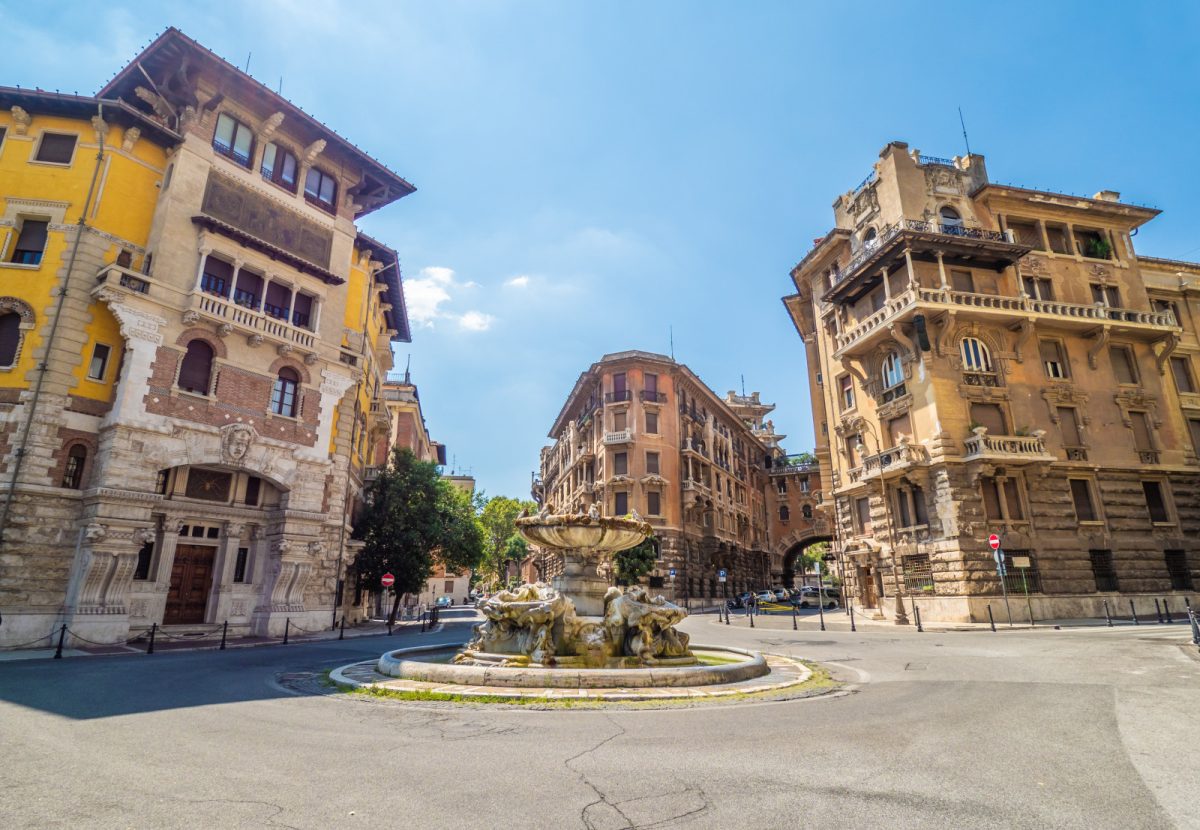
Rome offers many accommodation options, from expensive hotels to cozy B&Bs. Prices can be eye-watering in the center, especially during peak season. Naples is generally cheaper, but you’ll want to be more careful about which neighborhood you choose.
Safety-wise, Rome’s tourist areas are secure, but pickpockets love crowded spots. Naples has a bit of a rough reputation, but it’s not as bad as some make out. Just use common sense, and you’ll be fine.
Pro tip: In both cities, look for places to stay near metro stations. It’ll make your life so much easier, trust me!
See Related: Where to Stay in Italy with Kids: Top Family-Friendly Destinations for Unforgettable Memories
Comparative Overview
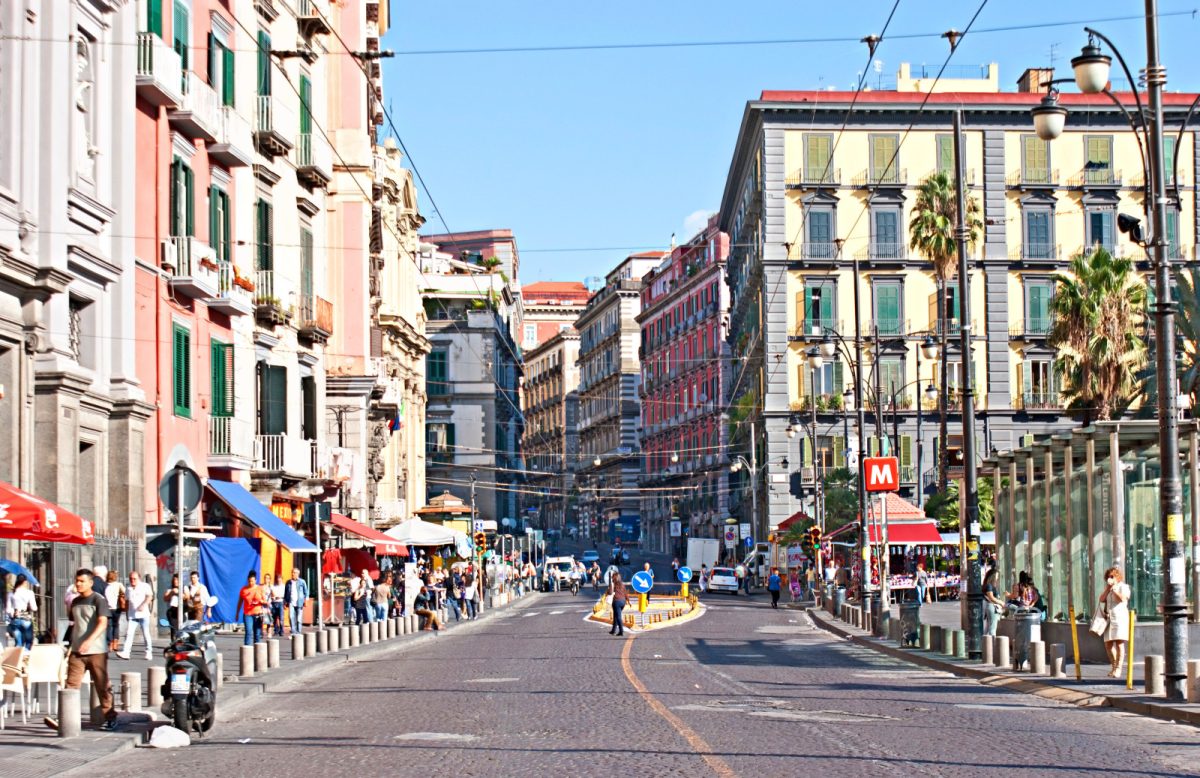
Naples and Rome offer distinct experiences for travelers exploring Italy. These two iconic cities showcase different facets of Italian culture, history, and lifestyle.
Lifestyle and Cultural Comparison
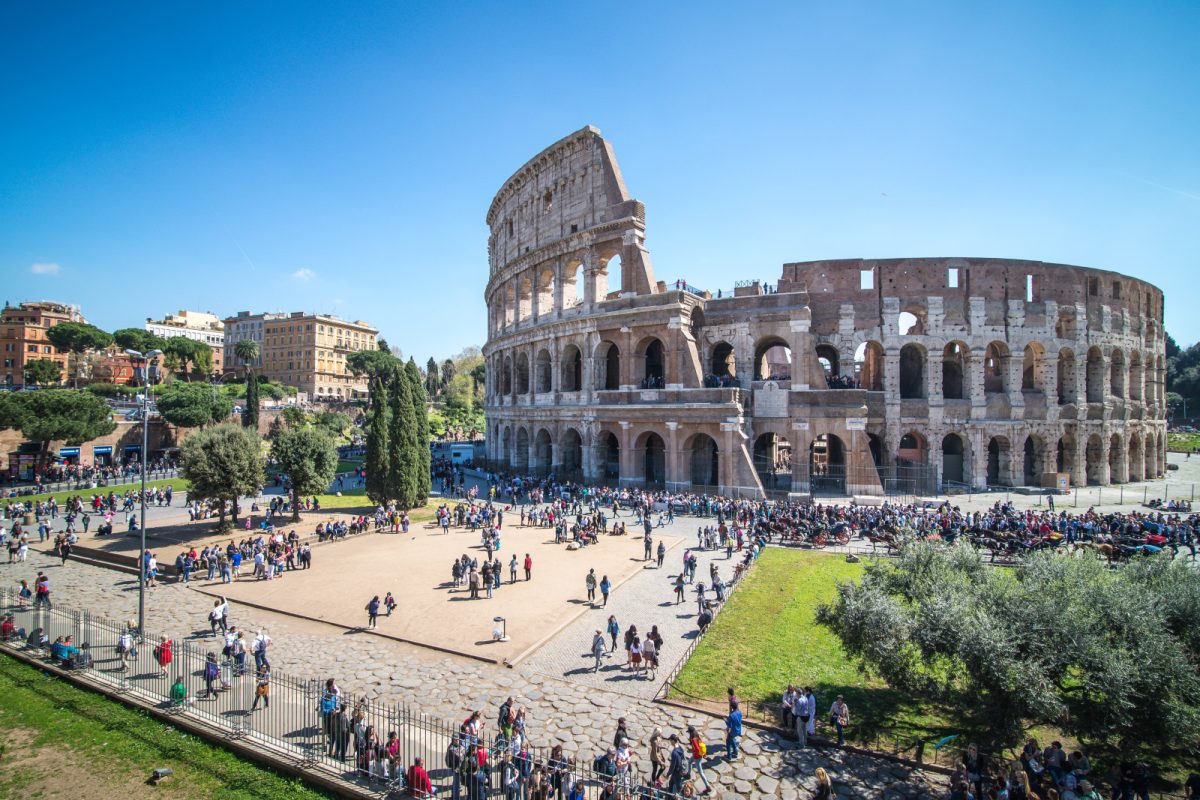
Naples exudes a lively, authentic charm. The city’s narrow streets buzz with energy as locals go about their daily lives.
Neapolitans are known for their warmth and passion, often seen gesticulating animatedly during conversations. Street food reigns supreme here, with pizzerias serving up the world’s best slices for just a few euros.
Rome, on the other hand, blends ancient history with modern sophistication. The Italian capital‘s lifestyle revolves around its stunning architecture and art.
Romans embrace the “dolce vita” philosophy, savoring long lunches and evening aperitivos. While more expensive than Naples, Rome offers a wider range of cultural experiences, from opera houses to high-end boutiques.
Travel Experiences in Each City
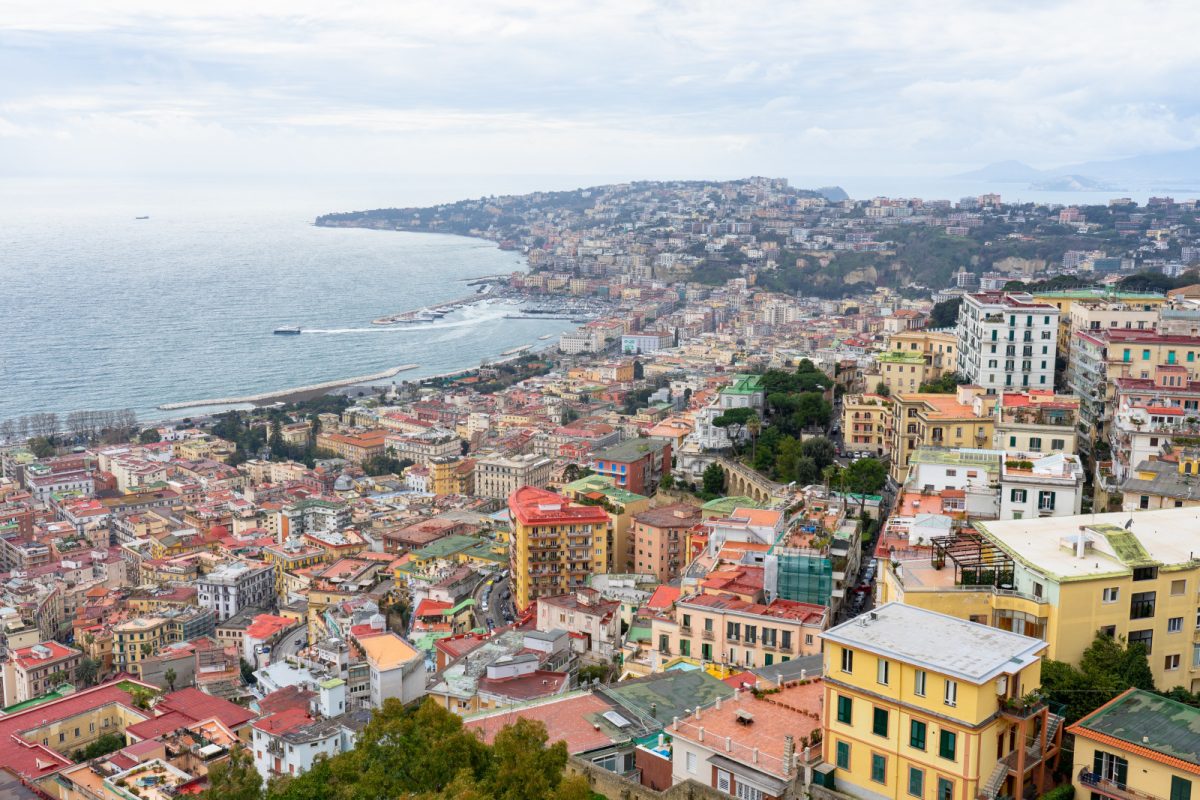
Naples rewards adventurous travelers with its gritty charm. Just a short train ride away, visitors can explore the haunting ruins of Pompeii. The city’s historic center, a UNESCO World Heritage site, boasts hidden gems like the Cappella Sansevero, with its breathtaking Veiled Christ sculpture.
Rome dazzles with its world-famous attractions and tours. History buffs will be in heaven, from the Colosseum to the Vatican Museums. The city’s layout encourages walking, with surprises around every corner – like stumbling upon the Pantheon while enjoying a gelato.
Both cities offer unique culinary experiences. Naples is the birthplace of pizza, while Rome claims pasta dishes like carbonara and cacio e pepe. Travelers can enjoy these local specialties in charming trattorias or bustling markets in either city.
Frequently Asked Questions
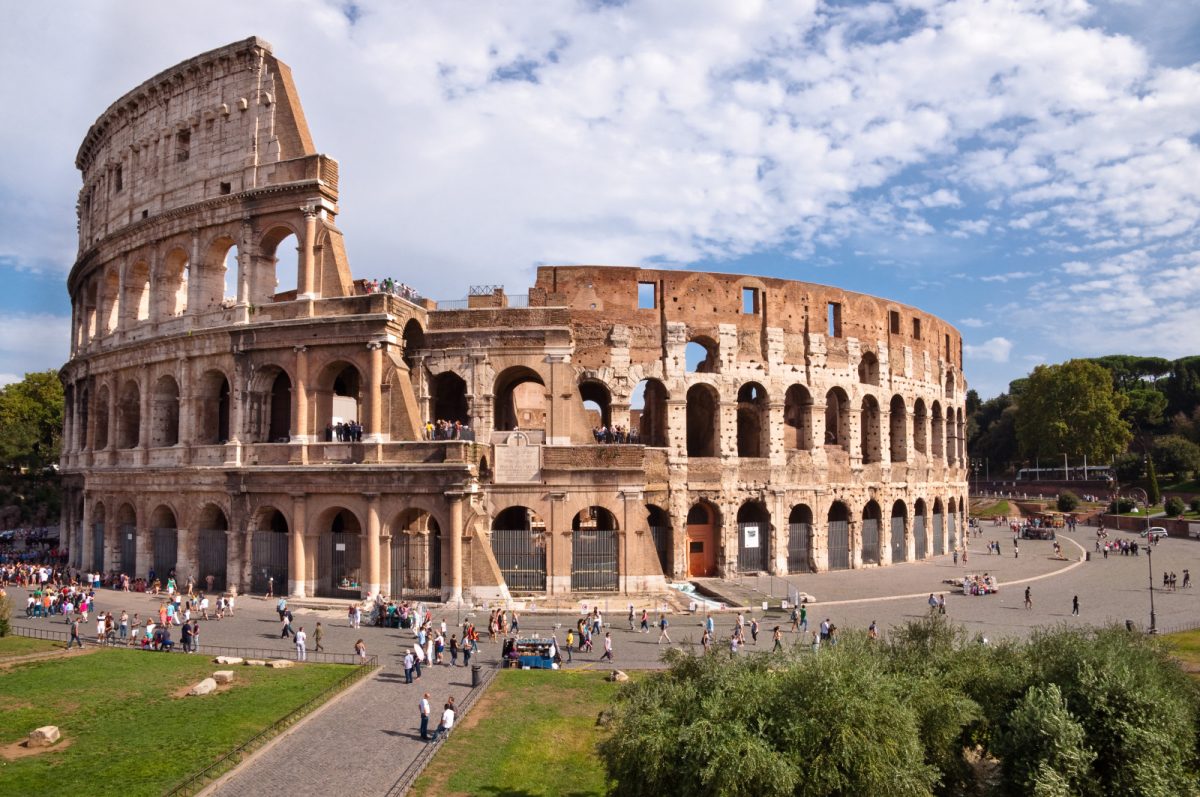
Rome and Naples offer very different Italian experiences. Let’s explore some common questions travelers have when deciding between these iconic cities.
What are the main differences between visiting Rome and Naples?
Rome is all about ancient history and grand monuments. You’ll find world-famous sights like the Colosseum and Vatican City.
Naples has a grittier, more authentic vibe. It’s known for incredible pizza, vibrant street life, and proximity to Pompeii.
Which is more cost-effective for travelers: flying to Rome or Naples?
Flying to Rome is often cheaper, with more flight options from major cities. But once there, Naples tends to be cheaper for food and hotels.
A pizza in Naples might cost €5-7, while you’d pay €10-15 in Rome. Budget travelers can stretch their euros further in Naples.
How does the food in Naples compare to that in Rome?
Naples is the birthplace of pizza, and it shows. The Margherita pizzas are life-changing.
Rome has great food, too, but it’s pricier. Naples wins for seafood and street food. Try the frittatina (fried pasta balls) from a friggitoria. Yum!
Can you recommend visiting Rome or Naples for a first-time Italian traveler?
For first-timers, Rome is hard to beat. It’s got the big-name sights you’ve dreamed of seeing.
But if you want to skip the crowds and experience “real” Italy, Naples is fantastic. It depends on whether you prefer polished tourist attractions or raw local culture.
What makes Naples a must-see destination on an Italian trip?
Naples has an energy you can’t find anywhere else. The historic center is a UNESCO site, with narrow alleys and hidden gems.
The National Archaeological Museum is amazing. And let’s not forget day trips to Pompeii, Capri, and the Amalfi Coast!
Are there any notable travel tips for commuting between Rome and Naples?
The high-speed train is the way to go. It takes about 1 hour 10 minutes and costs around €30-50 one-way.
Book in advance for the best prices. Avoid driving – traffic can be crazy, especially in Naples. The train stations in both cities are centrally located, making transfers easy.

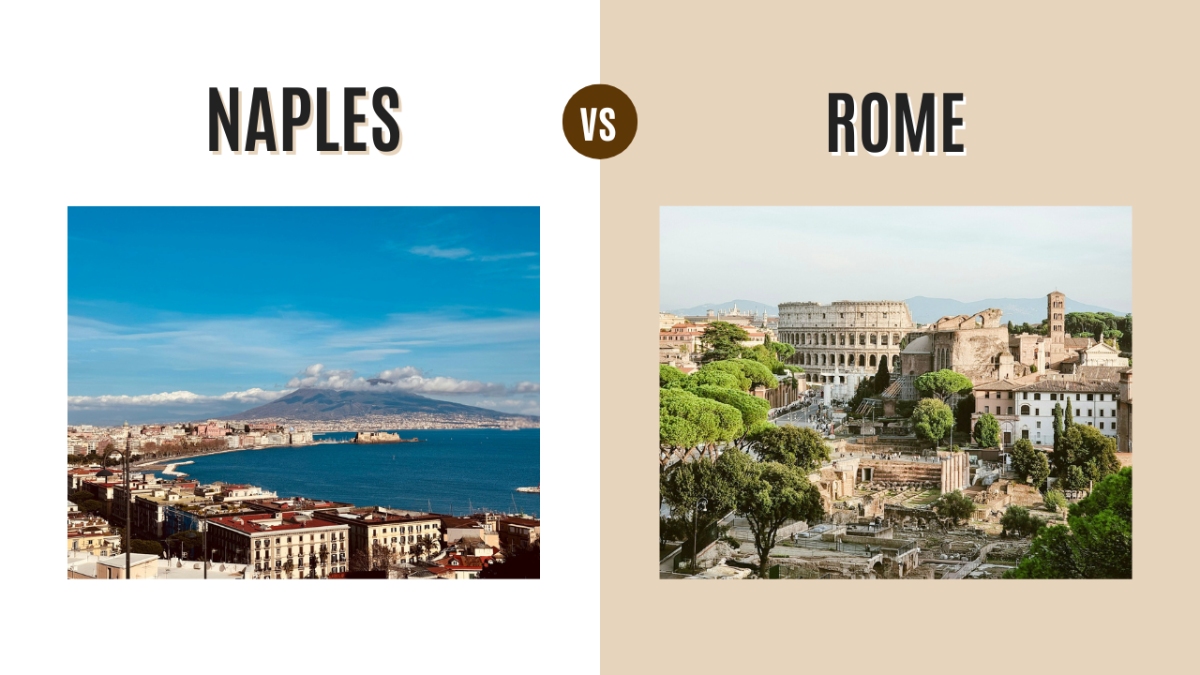
0 Comment